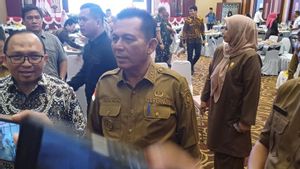Gunungkidul - High waves occurred in Gunungkidul, Yogyakarta Special Region (DIY).
The Gunungkidul Community Protection Unit Search and Rescue Team appealed to fishermen not to go to sea first during high waves that occurred in this area.
Coordinator of SAR Satlinmas Region I Gunung Kidul Sunu Handoko in Gunung Kidul, Wednesday, said that starting today until the next few days, based on information from the Meteorology, Climatology and Geophysics Agency (BMKG), there is an increase in the height of the southern sea waves.
"Today, 95 percent of fishermen are no longer fishing for fish. The waves are already high, although the peak has not yet occurred," said Sunu Handoro as quoted by Antara, Wednesday, February 24.
Sunu said that the fishermen of Gunung Kidul began to dock their boats inland yesterday. This is to prevent the ship from being hit by waves which could cause damage.
"The boats belonging to fishermen have been pulled over. Based on the experience of previous years, the waves were very high. So the boats had to be tapped," he said.
The same thing was said by the SAR Coordinator of Satlinmas Region II Gunungkidul Marjono. His party has informed fishermen about the latest sea wave heights.
"We have sent a graph of the wave movement for the next week. With this information, fishermen already know the steps taken, starting from pulling the ship ashore to not going to sea for a while until the waves return to normal," said Marjono.
The height of the sea waves reaching the shore is still relatively gentle. However, calls are still being given to keep residents vigilant.
"The wave height is around 13 feet (feet), which is still relatively safe," said Marjono.
Based on BMKG information, extreme weather has the potential to occur in the coastal area of Gunung Kidul which will take place from February 24-28.
The impact is predicted to be in the form of high sea waves, strong winds and heavy rains. This condition is influenced by the cycloneic circulation that moves from the north of the Australian continent.
The English, Chinese, Japanese, Arabic, and French versions are automatically generated by the AI. So there may still be inaccuracies in translating, please always see Indonesian as our main language. (system supported by DigitalSiber.id)













